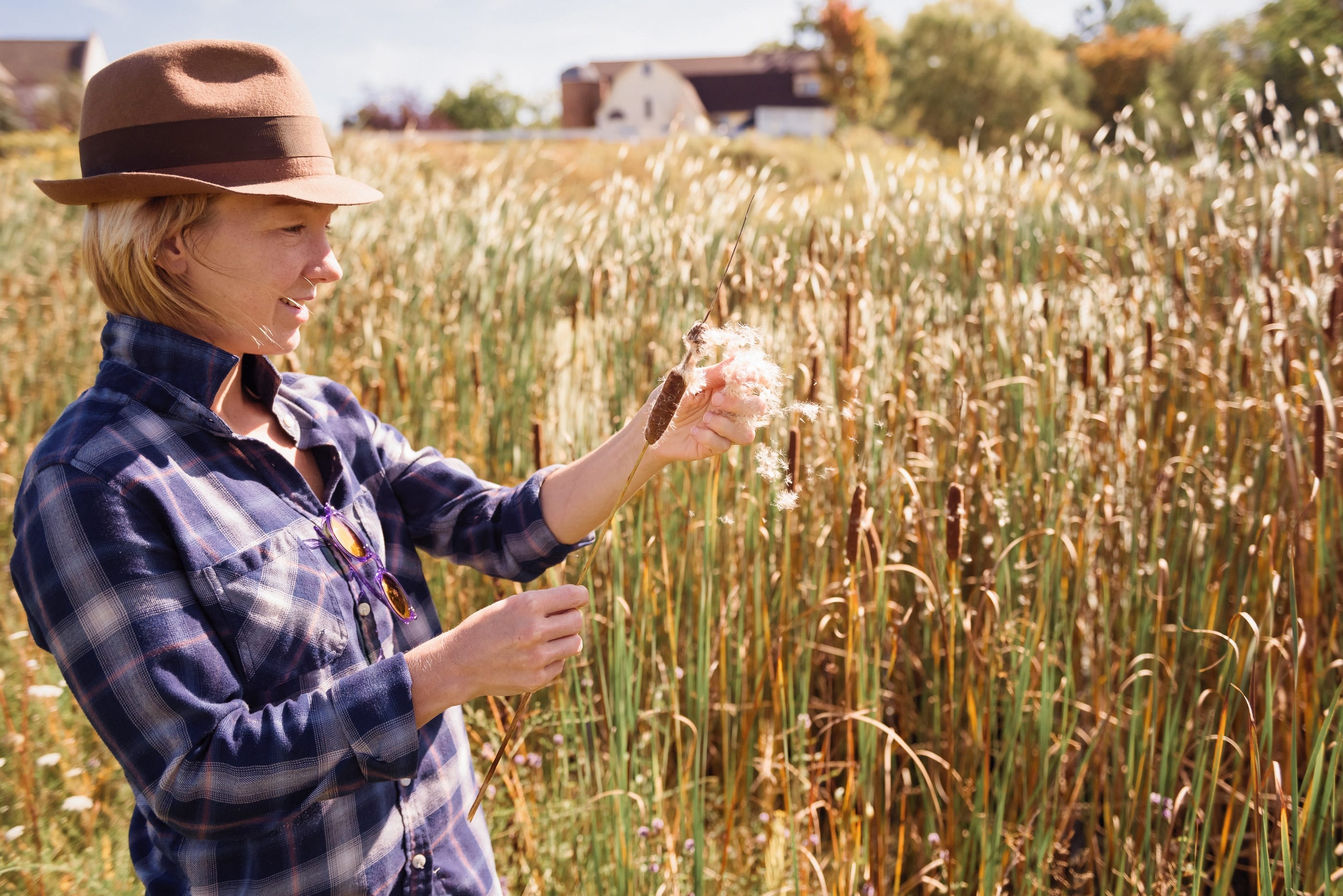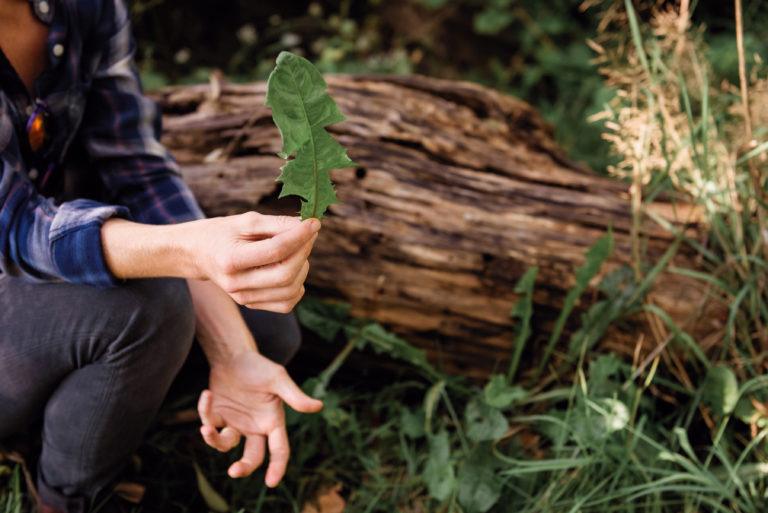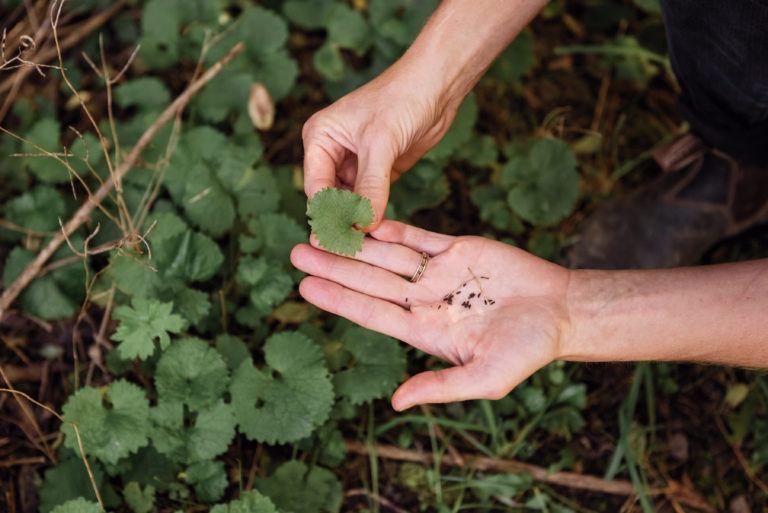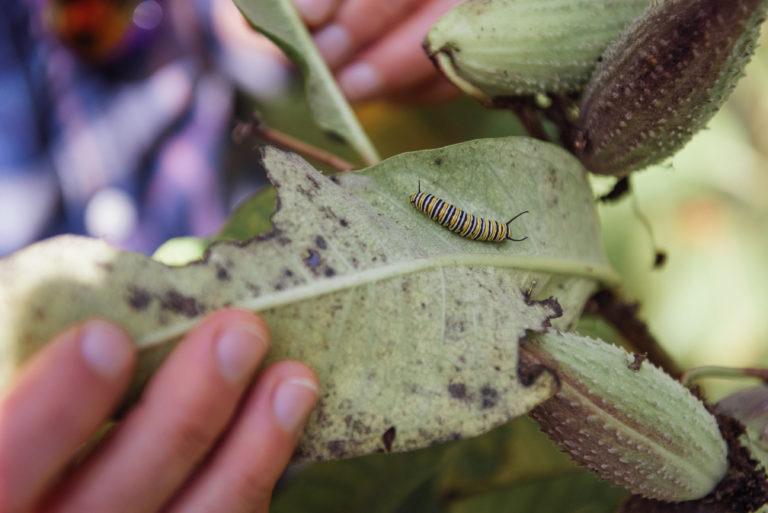
Sarah Kelsen is a Principal and Ecological Engineer specializing in regenerative ecology and reconnecting people to place.
When’s the last time you allowed yourself to get lost in nature? For most of us, spending time outdoors is a seasonal activity often correlated with vacation and holidays; it’s easy to feel that air-conditioned office buildings and homes have become natural habitats. And yet according to ecological engineer Sarah Kelsen, we should be developing a relationship with the wild on a regular basis.
Sarah considers her personal experiences with nature as unique and powerful learning opportunities. “Every time I venture into the woods is powerful,” she says, “though the first ‘powerful experience’ that comes to mind was this past summer, shortly after my daughter was born,” says Sarah.
She recalls craving a walk in the woods and deciding to embark upon a path behind her house. Calmed by the serenity of the outdoors, Sarah followed an inclination to meander in a particular direction in pursuit of wild mushrooms. During this impromptu wild foraging expedition, she encountered a large white, globe-shaped Lion’s Mane mushroom, known for its medicinal properties and delicious flavors.
“What felt powerful about that experience was the very subtle and gentle nudge of intuition, of the wild nature of connection,” says Sarah. When she heeded the so-called “call of the wild,” she was rewarded with something special that was both emotionally nurturing and physically healing.

Dandelion (Teraxicum officinal), often misinterpreted as an obnoxious weed, is a food and medicine plant with a myriad of health benefits. Brought to N. America with European migrants, dandelion (named for the French “teeth of the lion”) is packed with potassium and vitamin C, it helps stimulate bile production, readying the body’s digestive system. Dandelion is also cleansing for the liver, which can help moderate cholesterol and hormones. All parts of the plant (buds, leaves, and roots) are edible. Photo by Joe Sinthavong and Kaylyn Leighton of Shots by Seamless
Finding Purpose in Nature
Sarah’s interest in regenerative ecology stems from a lineage that deeply appreciates the lessons of the wild. “I came into this world with a deep reverence for the Earth and a passion for living in harmony with all of Life,” says Sarah. “I am born to parents who are deeply rooted in the outdoors and have encouraged that connection to place from a very young age.”
When she faced the age-old question of what to study in college, Sarah worked with her school’s Engineering department to design a degree that aligned with her passion for regenerative ecology. Her innovative approach addressed both the natural world as well as the wellbeing of humans. In the path that followed, Sarah eventually co-founded her Ecological Design Firm, which focused on projects that included building natural wastewater systems in southern Mexico.
Guided by the teachings of Traditional Ecological Knowledge (TEK), Sarah has cultivated a philosophy that values learning beyond science. She cites TEK as “a cumulative body of knowledge, belief, and practice handed down through generations through traditional songs, stories and beliefs.”
Essentially, TEK is a perspective that examines how living beings relate to their traditional environment. And humans in the modern world are no exception.

Garlic mustard, in the Brassicacea family, leaves were studied and found to be the most nutritious pesto on the continent. The roots are akin to wasabi / horseradish, flowers & leaves are an excellent addition to salads, and the seeds edible with a spicy mustard zing. These plants are considered “invasive” due to their prolific and non-native nature, and are encouraged to be consumed. One of my teachers once told me me that “the plants we need most follow us around offering themselves for our healing.” Photo by Joe Sinthavong and Kaylyn Leighton of Shots by Seamless
Connecting with the Wild
Because of her own experiences with nature, Sarah strives to create immersive experiences for others through plant walks and hands-on workshops.
“I wish to foster a safe, inclusive place for people to explore and deepen their relationship with the Earth,” says Sarah. “I invite folks to find comfort with themselves in the wild woods.”
In a world overstimulated by technology, Sarah highlights numerous benefits associated with grounding and connecting with the Earth, including reduced stress, increased happiness and creativity, lowered heart rate and blood pressure, and accelerated recovery from illness thanks to a boosted immune system.
While it may seem intimidating to immerse yourself in nature, Sarah’s approach makes it accessible to anyone seeking a deeper connection with the wild.
“In realizing we are surrounded by plants who are our teachers, our friends and healers, our allies, our ancestors, my aim is that we will tread more lightly, learn ways to give back, and also feel more deeply woven into the web of life,” says Sarah.

Monarch caterpillar on common milkweed (Asclepias syriaca), an important food source for these majestic beings. Milkweed is a native plant with edible shoots (tastes like green beans or asparagus), flower bud clusters (like broccoli, though check first for caterpillars), & seed pods (like okra). These various parts are edible throughout the seasons making it widely useful, though be sure of your identification & cook prior to eating. Photo by Joe Sinthavong and Kaylyn Leighton of Shots by Seamless
Returning to Nature in the Modern World
For those living in busy cities that seek a stronger connection to nature and the wild, Sarah offers simple, yet practical, advice.
“Put your phone down and go outside, and free yourself from your to-do list, even if just for a short time,” says Sarah. “Find a nearby park or place you can walk, at least to be moving in your body, breathing air, looking up at the sky.”
Inspired by the power of forest bathing, she notes that exploring beneath a forest canopy is especially ideal. Guided by her passion for connecting people to place, Sarah envisions a world where we all support regenerative ecology, with small steps as simple as refraining from mowing the lawn.
“I envision edible perennial and native landscaping everywhere people live, preserved wilderness lands, reparations with indigenous people, walking and biking, as well as concentrated, solar powered, mixed-age villages,” says Sarah.
But she believes the future of regenerative ecology depends on how we choose to relate to and respect the planet.
“Above all else, I envision a deep, lived reverence for the Earth and all its gifts,” says Sarah.
“The Earth is all very alive and we humans are only a small part of it. Our gifts are to create beauty with our words and our hands.”
—
 Laura Hanson is a writer, mentor, and yoga teacher with a background in the therapeutic applications of yoga. She focuses on using breathwork, meditation, and reflection to empower others to find their inner strength. Her mission is to enable practical wellness and help others create more productive, fulfilled lives by nurturing the mind, body, and spirit through mindful living. Follow her on Instagram and Facebook, @laurajhanson.
Laura Hanson is a writer, mentor, and yoga teacher with a background in the therapeutic applications of yoga. She focuses on using breathwork, meditation, and reflection to empower others to find their inner strength. Her mission is to enable practical wellness and help others create more productive, fulfilled lives by nurturing the mind, body, and spirit through mindful living. Follow her on Instagram and Facebook, @laurajhanson.





